Huffing and puffing along side running group buddy Denny (yes the over 6’6, 75 year old who kicks my butt), we started chatting about being the only two in the group sporting some kickin’ Hokas. He may or may not have laughed at how bright mine were as I pondered why he went with the all white option, but we both agreed they were both necessary for our running shoe rotation.
As the miles progressed and the conversation veered this way and that like the path, we found ourselves back to the topic of running shoes.
Both proclaiming that one of the keys to staying injury free was multiple pairs of running shoes!
Listen up, if this man can run marathons injury free at 75, for MANY YEARS on end, it’s sound advice!
Do you really need an excuse to buy a new pair of running shoes??
Of course.
Let me help you justify it to anyone who might ask why your current plethora needs another friend {it’s like finding a stray kitten, you want to cuddle them all}.
How Many Running Shoes Should I Have?
Most runners need a minimum of two pairs of running shoes. Though this is a trick question because you can’t have too many.
But if you’re running at least 4 days a week a minimum of 2 pairs, allowing you to follow the tips below about rotating running shoes.
- If you’re only running 1-2 days per week as cross training, then a single pair may be just fine. Ensure you are wearing different shoes for your other activities (checkout running vs walking shoes).
- Running on a lot of different terrain then you might need trail shoes and two road shoes.
- Working on speed, you might have a pair of carbon plate shoes just for speed and race day, plus two other everyday trainers.
- You’ll find in my closet at least 9 different styles (yes, totally different shoes, not just stocking up on models I like). Of course, part of my job is shoe testing, but I’m not abnormal among long time runners.
Most of this is about injury prevention, which we’ll touch on. But it’s also about having a good shoe ready for race day based on how long they last.
What Should My Running Shoe Rotation Be?
My first advice is not to worry about having a big shoe rotation on day one. Part of growing your rotation is going to be finding the shoes that feel the best to you.
There are in fact studies showing that you perform better in shoes that FEEL the best to you, regardless of all the other shoe features. So don’t feel like you must buy the stability shoe that the running store recommends when it doesn’t feel good.
Here are the shoes we want to ensure are in your rotation:
Daily Trainer – Likely 2+ pairs
This may be the only type of shoe you have and you may simply have two different models. That’s perfectly fine! The goal is to have two different types of shoes with slightly different feel or heel-to -toe drop, so your feet have to work a little differently.
A few of my personal recommendations:
- New Balance 1080 V13 – pretty soft
- Saucony Triumph 21 – pretty soft
- On Cloudmonster – a little more firm than the above, but that’s better for many
- Nike Pegasus 40 – not as soft, but a true favorite of so many
If you are running back to back days, then you want to rotate shoes each day.
Speed Workout Shoes – 1+ pairs
For many, many years of my running this was not a shoe in my rotation. So it’s absolutely not a must have!
But once I started focusing more on speed workouts and really wanting to go after PR’s in shorter distances, I wanted pairs that I could slip on for these workouts. Part of this is a mental shift telling my brain and body that today is a let’s go day!
- HOKA Mach 5 – lightweight, but still good cushion
- Saucony Kinvara 14 – technically this goes for a great daily trainer too
- Checkout these best lightweight running shoes, which are generally designed thinking about speed
Race Day Shoes
Race day shoes can depend on your goal and what you’re currently training for.
You may simply want to use a newer model of the daily trainer that you’ve used throughout training. This is what I did for decades and set plenty of PR’s. The plan is just to ensure you get a new pair about a month before race day, so they are broken in, but not broken down.
When you’re ready to step things up a notch then we’re starting to look at adding a carbon plate running shoe.
- On Cloudboom Echo 3 – winning shoe of the London marathon
- Nike Alphafly – more stable than the Vaporfly
- OR any of the speed workout shoes might also be what you decide to go with
Just remember you need to have tested out these shoes on a run of at least 10 miles for a half or 15 miles for a full to make sure you don’t have any blisters or hot spots.
Trail Running Shoes
The last piece of your running shoe rotation are those designed specifically for the types of trails that you’ll be exploring. A light crushed gravel path around town, might be just fine with your daily road running shoes.
But if you’ll be hitting more single track trails, dealing with rocks or uneven terrain then it’s really beneficial to get a trail running shoe. This is going to help protect your toes with a rockplate and often keep your feet dry from streams, etc.
Should We Rotate the Same Shoe or Different Types?
Both shoe rotations have value. Let’s talk about which is most necessary for you.
- If you have a model you swear by and you’ve been injury free a long time, then yes you can simply rotate two pairs of the same running shoe model.
- If you have had some injuries, I’d recommend you rotate different styles of running shoes.
- See below for the benefits of rotating different models.
How Often Should You Change Running Shoes?
It’s been said the average lifespan of a running shoe is roughly 500 miles. This is going to vary depending on:
- how heavy you land
- the surfaces you run on (treadmill shoes last longer)
- the frequency of your runs
- whether or not you rotate your shoes
- read more on when to replace running shoes
Two pairs of shoes is great, but I’m telling you that the best marathon running shoes are ones you’ve worn for maybe a month or two, while rotating with another pair.
What is the Best Running Shoe?
I’m throwing this question in because it’s asked so often.
I believe the particular running shoe you need is very dependent on your running form, foot strike, surface and personal preference. If forced I would say these are the best marathon running shoes.
Personally, right now I’m on my upteenth model of the Saucony Kinvara, the NB 1080 and running a lot of easy miles in the Saucony Triumph as well. But when it comes to speed work and race day, right now I’m rotating through the Nike Vaporfly and the Adidas Adizero Pro.
These are changes over what felt good even a few years ago when I was skeptical of the Triumph and putting a lot more miles in on the HOKA Clifton.
Why Do They Change Running Shoe Models Every Year?
Nothing frustrates a runner more than find out their favorite running shoe has been released in a new model. Why? Well we know what we like and we aren’t positive we’ll like whatever they did!
But shoes will continue to adapt for a variety of reasons.
- New technology that could make the shoe lighter or more durable
- Updates based on feedback from many runners
- Updates to current materials and colors that are popular
- Because if nothing changes it’s a lot harder to get your attention or media attention to keep sales rolling
Why It’s Good to Rotate Running Shoes
AH ha, let’s talk more about how rotating your shoes makes them last longer and why it’s actually really important for injury prevention.
I know I talk A LOT about tips to prevent common running injuries, but it’s the worst thing to happen besides having your favorite running shoe model suddenly change.
1. Eliminate Potential Muscle Imbalances
If your body is used to running in the exact same shoe all the time, but it’s not the perfect shoe for you (often it’s not) then it will compensate for muscle imbalances.
For example, if you’re in a stability shoe because your foot is overpronating, but the actual issue is your weak hip muscles everything is about to get worse. For awhile the shoe will prop up your foot. You’ll think things are fine, while your hip gets weaker and eventually you’ve got pain from hip to foot.
This study showed those rotating running shoes through at least 2 models were 39% less likely to get injured.
And here Saucony goes in to a more detailed explanation:
“Our bodies are best at doing one thing: Adapting to the environment and the stresses we expose them to. For runners this means that our bodies adapt to the stress of running, becoming fit and strong.
But… because running is so repetitive, it can occasionally overstress our bodies, especially when we increase training intensity.
Every step loads the same tissues in the same way as the previous step. Running shoes can affect how the stress of running is distributed within the tissues of your body.
By wearing different shoes on different days, you may avoid overloading any one muscle, tendon, bone, or ligament while simultaneously strengthening others.”
2. Enjoy More Cushioned Running Shoes
When I worked onsite at New Balance creating their wear test program, the shoe engineers (yup it’s a massive job) told me that cushioned shoes can need up to 24 hours to fully bounce back to proper form to support your foot.
Giving them time to return to their full cushion makes them feel better, prevents injury and prolongs use. Bonus points because it’s wonderful when your shoe just feels softer too!
If you love cushion like I do, checkout my review of the Hoka Bondi, the most cushioned shoe I’ve ever tried.
Remember that more cushion isn’t always better. But I do love cushion for my recovery days and often for long runs.
While you can add in some insoles that provide cushion, this doesn’t mean you’ve corrected the actual break down of the shoe.
As the functional breakdown occurs, it will actually change the way your foot lands, which changes your stride.
3. Different Shoes are for Different Runs
I think different shoes are meant for different types of runs and I’m not alone. This is a key reason we rotate running shoes.
Different running shoes affect running kinetics and kinematics at or before heel strike, but not at mid-stance — University of Cape Town research
While I love my minimal shoes (those with a lower heel to toe drop and less cushion), I learned the hard way that over 18 miles my knees and feet weren’t so pleased. For anything up to the half marathon they’re a great way to stay focused on connecting to the ground.
The more cushioned new style of daily trainers made me feel comfortable in longer runs by reducing the overall pounding.
But again, on super long runs if you start to shuffle rather than pick up your feet, beware these can lead to trips! However, they are often the preferred shoe of many ultrarunners, so maybe I’m just clumsy!
Read more about choosing maximal or minimal shoes>>
Of course, you’ve also go options for a stability or other foot corrections, which I’m going to detail below.
I think these can be helpful to wear as part of your rotation, especially when coming back from an injury and working on your muscle imbalances.
In fact, I’m testing out the best insoles for runners, to help provide my knee more support as my legs build back up post surgery.
Types of Running Shoes?
Confused by what are the different types of running shoes. Have no fear, I am hear to give you a quick and easy breakdown, along with a recommendation from shoes that I have tested over the years or heard from other runners really met their needs.
Neutral running shoe:
Shoes that are designed for the average runner who has no issues with their gate. I recommend most runners opt for these and work on correcting muscle imbalances instead of the shoe doing the work for them.
✅Example: On Cloudmonster – the shoe I mention above as one of my favorites for fit, comfort and cushion.
Stability running shoe:
For runners that want help to correct a foot that rolls inward, often due to weak hips, but could also be caused by flat feet or low arches.
✅Example: New Balance 860 also provides a great cushion and yup I’m a fan of some good cushion.
Motion control running shoe:
For runners who have moderate or severe overpronation. These running shoes have stiffer heels and medial supports, this is basically the next step from a stability shoe.
✅Example: Asics Gel Kayano is on to model 29 because the shoe is a long time favorite that they have a continued to tweak.
Minimal running shoe:
Shoes that have a smaller heel to toe number, usually between 4-8mm.
✅Example: The Saucony Kinvara is a long time favorite of mine and shoe you will often see me wear. It lasts, it’s minimal but with a light amount of cushion. And yes, I totally will buy the older model to save money and love it just as much as a new version.
Maximal running shoe:
Shoes that have a larger built up sole, which is designed to provide a lot of cushion. To the surprise of many they are also a low heel to toe ratio, which is often a feature of a minimal shoe.
So they’re great for both cushion and being ideal for eliminating issues of a high heel, like heel striking.
✅Example: Hoka Bondi is my current favorite for a great feeling of cushion the day after a long run where my legs feel a bit more tired.
Barefoot running shoe:
Shoes that put very little between you and the ground, usually having a separation for each toe. Personally, I don’t love these for most runners because I’ve seen a high rate of injuries when people switch to these.
Zero drop running shoe:
A step up from barefoot, you could actually enjoy some cushion, but the shoe will have no difference from he heel to the toe making it similar in style to the benefits of barefoot running.
✅Example: Altra Running Shoes have cornered this market and do an incredible job.
Trail running shoe:
Seems obvious, but trail running shoes are designed to provide you with more traction and grip. They work not only on the trails, but to get you running in the snow all winter with a little more stability. I have done a lot of trail running in road shoes and for sure, I wish I’d simply made the switch sooner.
✅Example: Brooks Cascadia is a style I’ve used
Beyond the actual names and types due to differences, there are just the types of shoes you use for different workouts.
Here is a good article on the different uses and example shoes:
“LONG RUN shoes need to support you when you fatigue, and when your running form deteriorates over the run (this is normal!). Long Run shoes are your heavier shoes and give more support and cushioning than your FAST RUN shoes.
FAST RUN shoes are designed to go fast. They are lighter, have less bells and whistles, and are much more flexible to allow the foot to move fast through the heel to toe transition.”
Then of course you have trail runs, which is a whole different ballgame and obviously requires a different shoe!
Your trail run shoes need to help protect your feet from rocks, provide traction and often be waterproof.
4. Feed the Fun
Fine this is probably not the best reason ever, but I LOVE running shoes.I love the colors matching my shorts. I love that some pairs make me feel crazy fast and others feel like a warm blanket allowing me to get comfy to run for hours.
And I really love that getting a new pair makes me want to immediately go for a run.
Basically if a new pair of shoes or having different shoes gives you a mental boost then why not?
I absolutely have certain shoes that I put on and just know they are my SPEED shoes or my RACE shoes. Mental games are a big part of running well and I like all the tricks
Need an excuse to buy new #running shoes?? Read this! #injuryprevention Click To Tweet5. Run Stronger
You might not be in a place to go on a super long run with a minimal shoe, but really want to try it for some speed work.
- Using a minimal or zero drop shoe allows you to build strength in those smaller feet, ankle and calf muscles that are challenged in a lighter shoe.
- While a stability shoe might help on an easy day to reteach you how to maintain good foot position. Not using them for some runs gives you a chance to build up the hip strength to move to a neutral shoe all the time.
- Rotating shoes means that your body does not adapt to one style and therefore get lazy, which leads to muscles turning off.
- Our goal is not to let any muscle get lazy because the shoe is doing the work for it.
6. Running Only Shoes
Yes having two pairs of running shoes means double the cost. But not really. You were going to need that second pair eventually. You’re just doubling up now, instead of later.
SOOO to extend the life of either your 1 pair or both pairs make sure they are used for running ONLY.
That’s right, walking or other cross training in your shoes can change your foot pattern in the shoe. This increases the speed of their retirement party.
Prolong the life of your running by not wearing them for all your daily activities. It’s so easy to grab them on the way out the door. But if you want that pricey pair to last you’ve got to stop.
I started keeping a couple pairs of running shoes that are retired from mileage, but still feel really good by the front door. Now I grab them instead of my current trainers for a walk. Of course, eventually they all make their way back to the running store for recycling!
Looking for more running shoe info?
- How to pick the perfect running shoe
- How to make sure running shoes fit properly
- How to clean running shoes (hint it’s not in the washer)
- Hoka Vs Asics
- Nike Vs New Balance
Other ways to connect with Amanda
Instagram Daily Fun: RunToTheFinish
Facebook Community Chatter: RunToTheFinish
Sign Up to Receive a Weekly Newsletter with Top Running Tips and Laughs
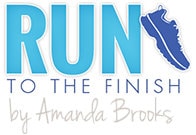
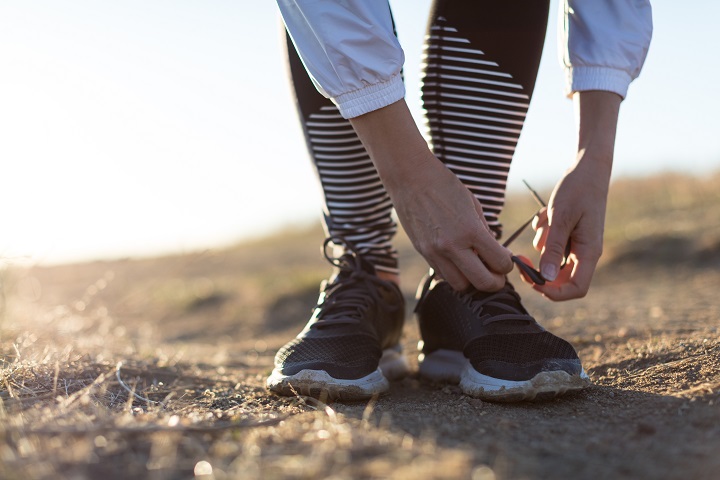
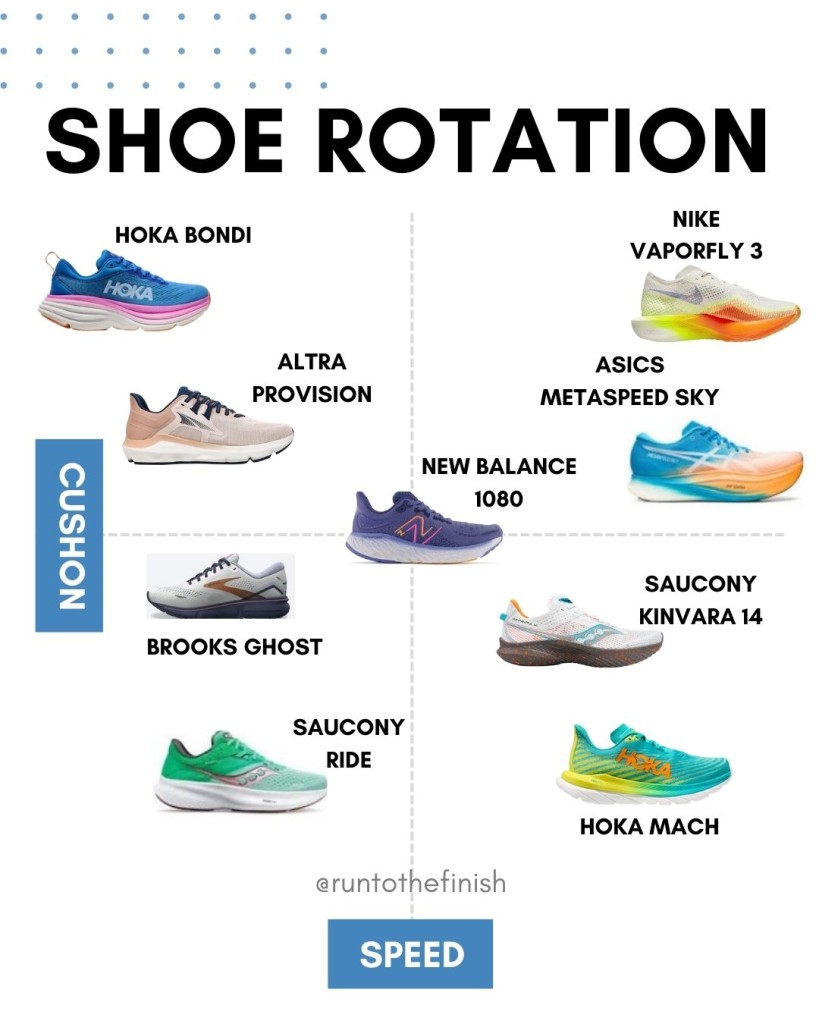
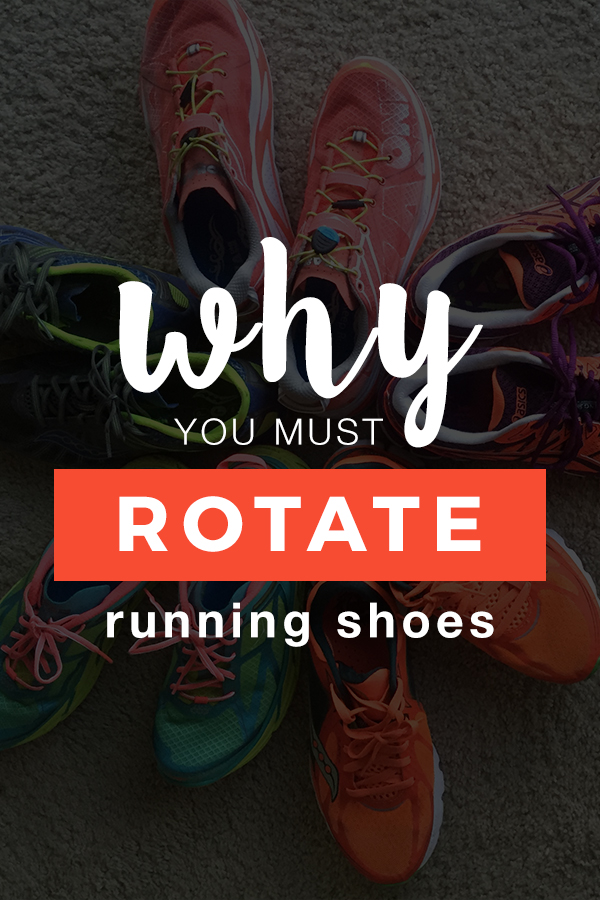
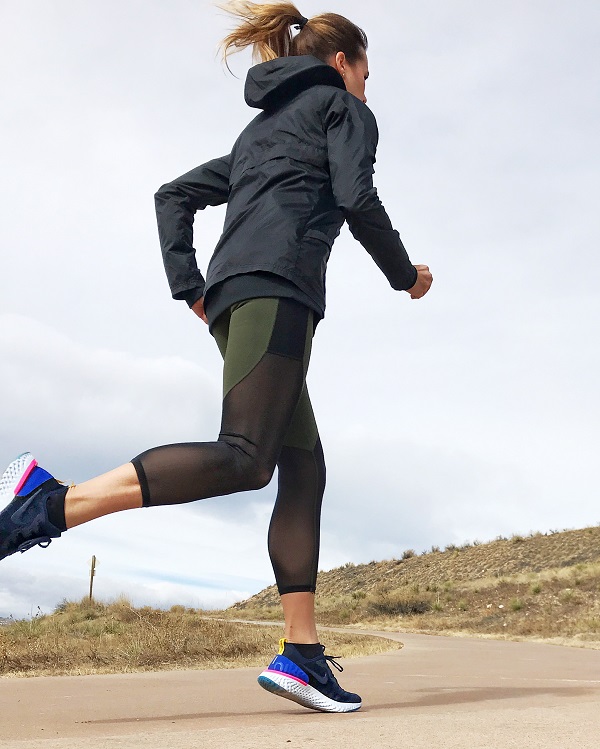
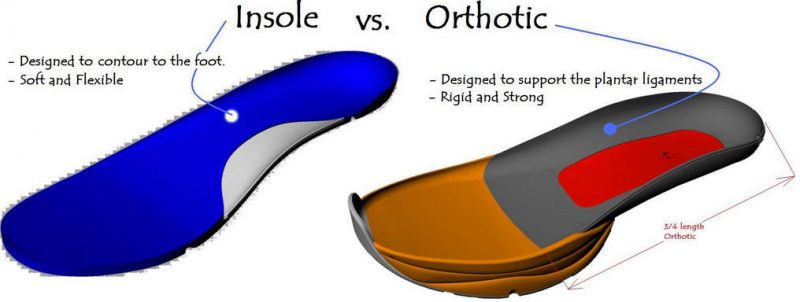
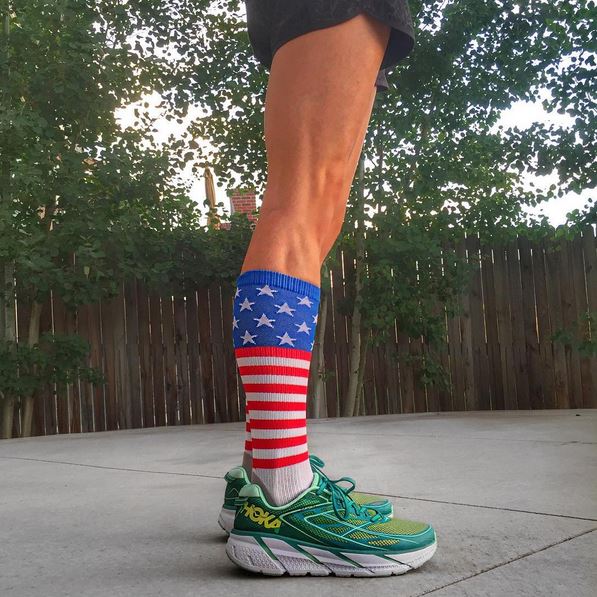
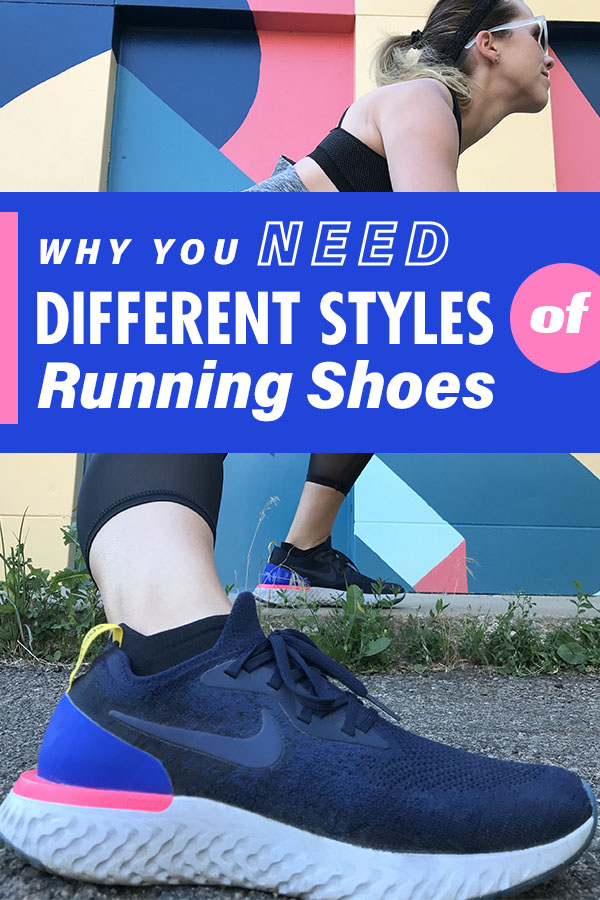
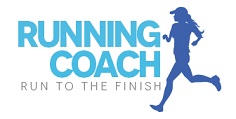
 Treadmill vs Outside Running: What’s the Difference?
Treadmill vs Outside Running: What’s the Difference?

vitatrain4life
I definitely know this is something I need to do and, although I have about 6 pairs of "running" shoes, I only run in one of them. Yep. The other 5 are for either racing, cross training or shoes I thought would be good for running. This is great advice that I WILL be taking!
RunToTheFinish
I know I started getting in to that habit too — or saving certain shoes like fine china, ha!!
@suzlyfe
Don't make me count! Naw, right now I have 4 in active rotation–3 for running, one for strength and walking about. This time they are all different models, but even in the past I made sure to have multiple pairs of the same model to rotate (at the time, my feet didn't like changing up the models that much). Protect your investment–your time, your body, your shoes and money!
RunToTheFinish
So true even having multiple of the same shoe is big for the bounce back factor…killing me I want to go buy more right now!!
Talk Less Say More
Yes, yes, yes!! In fact, YOU may very well be the one who told me this when I started marathon training last year. I wasn't able to run the marathon after all (for different reasons entirely) but this is sound advice that I stand by now! I have a pair of shoes that feel great for short runs or sprints, but as soon as I try and run over 2 miles in them, I feel it in my joints.
My recent post I Am…
RunToTheFinish
WOHOOOO that makes me so supremely happy!
Kimberly G
i've been thinking that I need to rotate my running shoes. I tend to wear the same sneakers for all my runs. I'm really going to start using different sneakers for different runs, thankss!
runningoutofwine
I definitely agree! While I do stick to Brooks, I have 3 different models that I rotate between. There is such a different in the kind of shoes that work well for speed workouts vs long runs!
My recent post Sunday Meals and Recovery vs Rest Days
christineyu69776410
I can understand intellectually why I need to rotate running shoes but I definitely don't do it regularly! I just get in the habit of putting the same ones on. Plus, any excuse to buy new running shoes, right??
My recent post 13 Best Podcasts to Keep You Inspired, Creative and Curious
maryedooley
Right now I'm working with two, but usually I have three pairs- Mizuno Wave Inspire (my favorite), Saucony Guide, and Asics 2000. I tend to run my long runs in the inspires, mid distance in the guides, and short runs in the 2000s (theyre a smidge too small, so I don't wear them for my long runs!)
RunToTheFinish
Imagine that I've actually not run in any of those! I love that different shoes work for different people!
Megan
I've been rotating shoes for a long time and actually it still surprises me that many people are not aware that they should be rotating their shoes. It's been a huge help with my arches and keeping my ankle muscles stronger. Feet are no different than muscles. You have to keep them guessing.
My recent post Fueling Between Seasons, Pumpkin Acai Bowl
christyruns
my husband wishes I only had two in rotation I bet :) I think I have 5 in rotation and I just retired 2. I run in Altras, Brooks, Asics, Mizunos. I run in supportive cushy shoes and super minimal shoes…. i like to keep my feet guessing I guess!
Kelly @ LSFblog
I have about ten pairs of athletic shoes but I teach aerobics, do strength classes, and, also, run so I have multiple pairs for each. Right now, I have two that I rotate through for running.
My recent post Back on Track
Kathy McElhaney
I've been a shoe rotator for years. I usually run in Sauconys (because I can always find them in my size!) We are in Hawaii for 3 weeks and I brought 2 pairs with me. With the humidity I like to give them an extra day to dry out. I have at least 3 other pairs at home.
thisrunnersrecipes
I just made this change about three weeks ago, and I'm so happy with it that I'm going to keep rotating shoes! For a while now I've kept two of the same style in rotation, so I can let shoes "bounce back" between runs. Now I've added in a lighter shoe for speed and tempo runs and can definitely feel it improving those muscles in my feet and ankles. Plus, it's fun to have different colors and shoes to choose from!
My recent post Pre-Race Goal Assessment
meaganleanne
I'm holding out on buying a second pair because it's a big investment and I'm nervous that I'll choose the wrong pair!
My recent post Spencerville Family 5k Run/Walk Recap
Janelle @ Run With No Regrets
In the summer I bought 2 pairs of shoes to rotate but one of the pairs really doesn’t work for me…so I need to replace those so I can reap the benefits of rotating shoes. Great tips as always!
RunToTheFinish
That is always the downside, you get a pair that\’s not right and then….still don\’t want to let them go due to the price!!
Krysten
I knew there was a reason I have a closet full of running shoes. They are necessary right?
RunToTheFinish
Hey I\’m always here to support an addiction to all things running :)
Megan
thanks for nice post.
Runnerjessnic
I wholeheartedly agree with having a sneaker rotation! I currently have 3 in rotation and am itching to add a 4th!
Brandy
I love your site! I used some of your recommendations to pull me through the Disney Half Marathon, you are my go to for running, stretching and other amazing information. Short, to the point information with videos and descriptions. My favorite was with your cat loving on you (how to get stronger hips-this a serious issue for me)! Hands down the best site out there! Thanks!
amanda
Brandy thank you so much!!! this was the sweetest note!!!
StayFitRunning
My injuries all but disappeared ever since I started rotating my shoes. I usually have three or four pairs. Different brands, cushioning, stability…etc. It’s been working great for me.
Annie
I knew about shoe rotating, and so I’ve been phasing shoes in and out in rotation for a couple of years (the newer shoe being for longer runs and races, and then being used for shorter runs when I’ve bought a new pair – the old older pair then get used for errands and the occasional muddy run). The last time I bought new shoes though, the guy in the shop was surprised when I mentioned running in two pairs at once, which I thought was odd! I assumed (once I read about it) that it was pretty standard practice for most runners/that it was the sort of thing they would recommend in a running store.
Michelle
I hate (aka love) when I read new information that makes a hell of a lot of sense!! Haha. I’m a creator of habit, so when I find something that works, I tend to buy several of them. But now i see that’s probably not the best thing for my preformence. Thank you for always keeping us informed and educated!
amanda
haaaa!!! if you aren’t having any injuries then you might be fine using that same shoe…usually some benefits from switching it up. But do what feels best!
Loribeth
A good excuse to shop more! I currently have 6 pair, in 3 different Brands and models. I love the Brooks launches, but tend to go with my Sauconys for longer runs.
Nina @waveforwellness.com
I’d rather not count the number of pairs i own :) I do however rotate them. Sometimes I would even put on my superlight and superbendy training flyknits for short runs or speed training.
marissa
Recently found out about the whole rotating-shoe thing after having one pair that I kept for way too long and ended up getting injured (suspected IT band :( ) it’s been hard bc now I have 2 new pairs that I can barely run in while building up strength but seeing them at least keeps me motivated! Now I know i probably shouldn’t be walking in them either though…. thanks for the post!